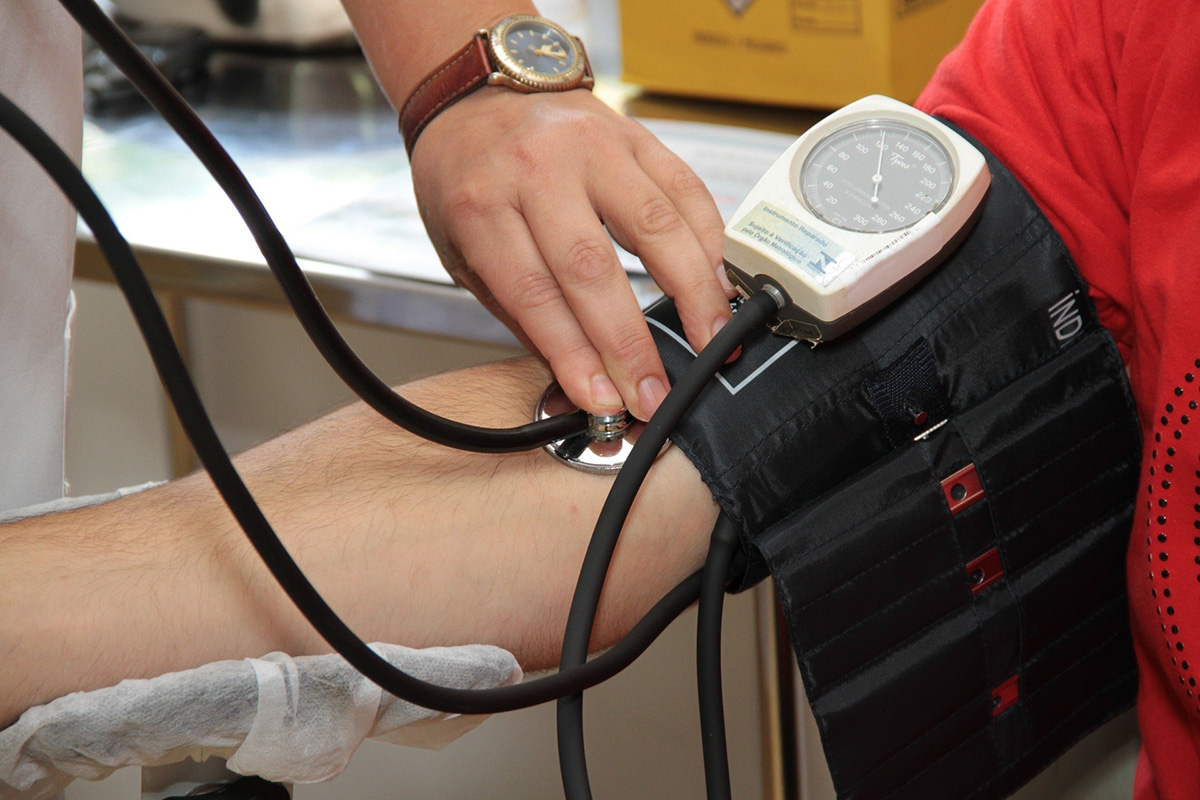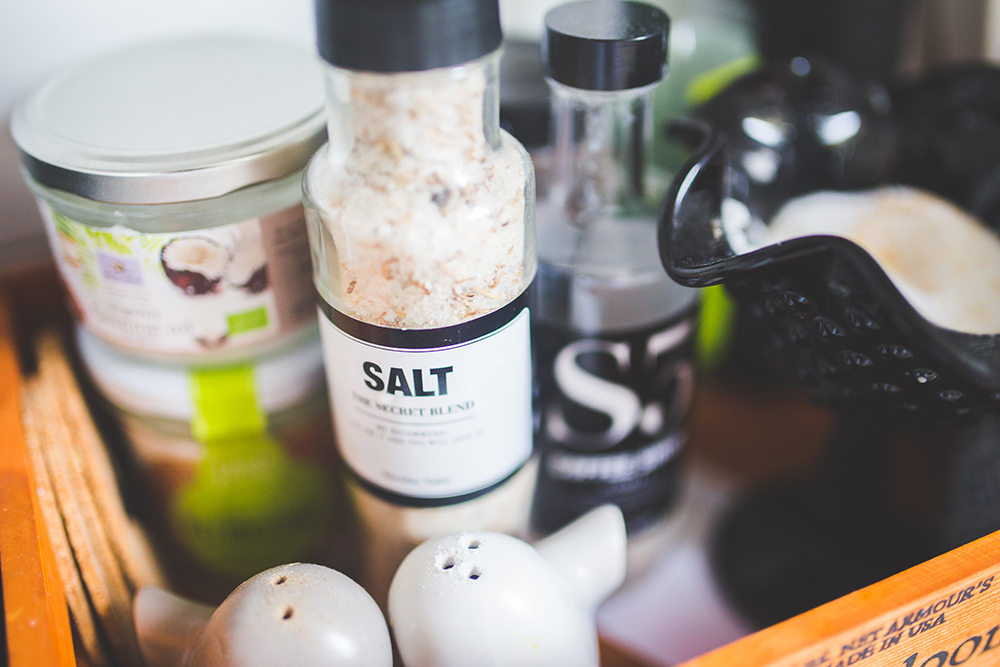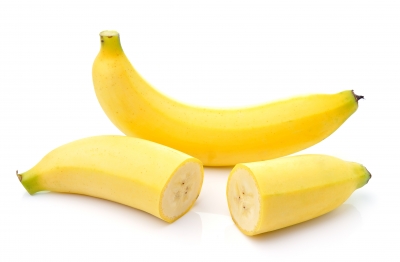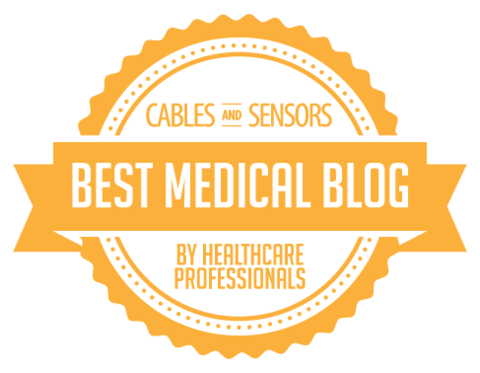Lower High Blood Pressure: 5 Ways

Let’s cover five ways you can lower high blood pressure through dietary changes.
1. Increase your intake of fruits and vegetables
The DASH (Dietary Approaches to Stop Hypertension) diet is a very effective meal plan to lower blood pressure. The diet is high in fruits and vegetables, including 4-5 vegetable servings and 4-5 fruit servings everyday.
Fruits and vegetables are rich sources of fiber and phytonutrients essential to heart health and promotion of a lower blood pressure. The more the better!
2. Decrease sodium intake
Sodium & Potassium – Are you getting too much or too little?
 I’ve shared information previously on the benefits of a high potassium diet and reduced blood pressure. However, another study has found an increased risk of death from heart disease to be linked to a diet high in sodium and low in potassium.
I’ve shared information previously on the benefits of a high potassium diet and reduced blood pressure. However, another study has found an increased risk of death from heart disease to be linked to a diet high in sodium and low in potassium.
High sodium, low potassium equals increased risk of death
According to research Elena V. Kuklina, consuming a diet high in sodium and low in potassium results in a 50% increased risk of death from any cause and almost doubles the risk of death from heart disease. The study I’m referencing was published in the Archives of Internal Medicine.
Study Participants
Researchers followed over 12,000 US adults. The participants did not follow a reduced salt diet nor did they have a history of heart conditions or stroke. Participants were followed for 15 years. During this time 2,270 participants died. Out of this number, 1268 died from cardiovascular disease.
Study Results
Lower Blood Pressure – Avoid These 7 Foods
With high blood pressure it’s important you follow a diet low in sodium and low in fat (particularly saturated and trans fat).
Here are 7 foods to avoid:
1. Pickles
Pickles are low calorie, which is great. However, they are loaded with sodium. One medium pickle (~5 inches long) can have around 570 mg of sodium. That’s over 1/3 of your sodium limit (1500 mg) for the day.
2. Canned Chicken Noodle Soup
I know, the thought of chicken noodle soup sounds warm and comforting . . . but beware! A one cup serving can contain up to 880 mg.
3. Sauerkraut
It’s a low calorie and a great way to add vegetables to a bratwurst, right? Nope. A half cup may only have ~13 calories, but it also provides you over 460 mg of sodium.
4. Fast Food French Fries
Yes, many fast food chains are now frying their fries up in trans fat free oil (but not all!); French fries still provide a large dose of fat and sodium. A medium serving of fries provides ~19 grams of fat and 270 mg of sodium.
5. Bacon
I don’t really count this as a meat. It’s mostly fat with three slices carrying 4.5 grams of fat and ~270 mg of sodium. Opt for lower sodium varieties and try turkey bacon instead of pork. Even with these switches bacon should remain a “special treat” not an everyday indulgence.
6. Whole Milk
Dairy is a great source of calcium, but high fat dairy sources provide more fat than you need. A one cup serving of whole milk provides 8 grams of fat, 5 of which are saturated.
7. Frozen pot pies
A single pot pie equals a serving of ~1300-1400 mg of sodium PLUS ~35 g of fat. The fat includes trans fat which you want to eliminate from your diet completely and an unhealthy dose of saturated fat. Clear out your freezer.
Be sure to sign up for the free e-course 7 Natural Ways to Lower Blood Pressure at http://lowerbloodpressurewithlisa.com.
All the best,
Lisa Nelson RD
https://lisanelsonrd.com
Lower High Blood Pressure – 5 Surprising Sodium Sources

As you work to lower high blood pressure, it’s important to limit the sodium in your diet. Current recommendations are to limit your sodium intake to 2300 mg per day or less. The new 2010 Dietary Guidelines will be released this year and it looks like sodium recommendations are going to be reduced even further to 1500 mg per day for all Americans (not just those with high blood pressure!).
Many studies repeatedly find significant decreases in systolic and/or diastolic blood pressure with a reduction in sodium intake.
Surprising sodium sources
Lower Blood Pressure with Potassium
 The effectiveness of potassium to lower blood pressure is directly related to sodium. Potassium works to balance out the sodium in your diet. An adequate potassium intake can lower systolic pressure ~4.4 mm Hg and diastolic pressure ~2.5 mm Hg.
The effectiveness of potassium to lower blood pressure is directly related to sodium. Potassium works to balance out the sodium in your diet. An adequate potassium intake can lower systolic pressure ~4.4 mm Hg and diastolic pressure ~2.5 mm Hg.
If you want to prevent or lower blood pressure it’s very important you balance your intake of sodium and potassium. The more potassium in your diet and the lower the sodium, the better your blood pressure will be.
Sodium Recommendations
The typical American diet contains 3.6 grams of sodium daily. It’s recommended that sodium intake be limited to 2.3 grams or less daily (~1 teaspoon). If you already have high blood pressure you’ll want to restrict your sodium intake even further – less than 1500 mg/day.
How Much Potassium?
Steps to Lower Blood Pressure
A few steps you can take right now to promote a lower blood pressure include:
- Quit smoking
- Lose and/or maintain a healthy weight
- Decrease salt intake to less than 2400 mg sodium per day
- Restrict alcohol to less than 1 drink/day for women and 2 drinks or less per day for men
- Exercise 30 or more minutes daily
- Following a heart healthy diet, such as the DASH diet to lower blood pressure
Be sure to sign up for the free e-course 7 Natural Ways to Lower Blood Pressure and http://www.lowerbloodpressurewithlisa.com.
All the best,
Lisa Nelson RD
https://www.lisanelsonrd.com



